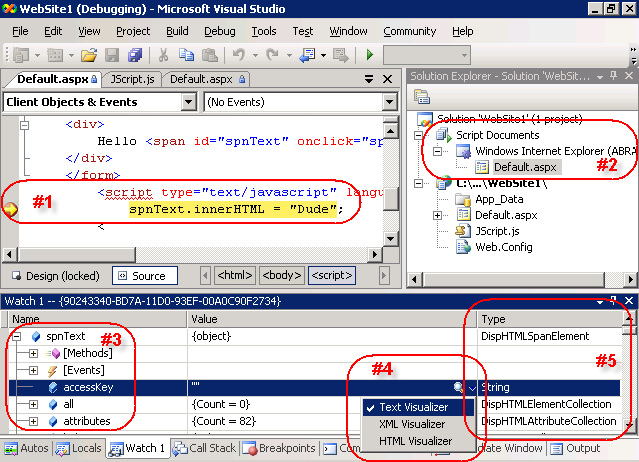
- Script debugger for windows how to#
- Script debugger for windows full#
- Script debugger for windows series#
What I will show here is the minimum needed. Jim Truher’s blog shown above also uses the API to create and use Runspaces. You create a Runspace using the PowerShell API.
Script debugger for windows how to#
In this example I will show you how to create another Runspace in your PowerShell session, run a script file concurrently in it, and then debug that running script with the ISE debugger. So how do you debug script in alternate Runspaces?ĭebug-Runspace lets you connect the debugger to another Runspace.Įxample: Creating and debugging alternate Runspaces The PowerShell console or ISE script debugger only works on the default Runspace. Id Name ComputerName Type State Availabilityġ Runspace1 localhost Local Opened Busy Debug-Runspace Get-Runspace lists all Runspaces in the current process (and AppDomain, but I’ll discuss that in a later blog). You can see all Runspaces by using the new Get-Runspace cmdlet. The PowerShell console and ISE (Integrated Script Environment) create a default Runspace for you. Multiple Runspaces let you run scripts concurrently this has been true since PowerShell version 1 as can be seen in this example: Jim Truher’s Blog (2006).

Normally your ISE or console has a single (default) Runspace, but you can have more than one. It defines the context in which a PowerShell command or script runs and contains state that is specific to your PowerShell session, including variables and functions that you define, modules that you load, etc. Runspace debugging is an advanced activity, but is incredibly useful in the right circumstances.Ī Runspace is an instance of the PowerShell engine within a process. In this blog I will discuss Runspace debugging which is similar to debugging a job. In my last article I talked about the Debug-Job command. These new features are available through the PowerShell 5.0 preview, which is part of the WMF (Windows Management Foundation) 5.0 preview that you can get from HERE.
Script debugger for windows series#
You cannot set breakpoints on steps called by a button or custom menu.This is the fourth in a series of blogs discussing the new PowerShell 5.0 script debugging features. You can set breakpoints on multiple steps. Breakpoints are ignored by FileMaker Pro Advanced when the Script Debugger is not in use. Breakpoints allow the Script Debugger to execute large sections of a script, pausing only to inspect the section marked with a breakpoint. To set or clear a breakpoint, click the line number to the left of the script step.Select a script in the Call Stack list to view that script's steps in the display area. The Call Stack list displays the sub-script.Ĥ. Perform a script that calls a sub-script. For example, if Script A calls Script B, which then calls Script C, you can view the steps in all three scripts.Ģ.

You can view sub-scripts when you step through scripts in the Script Debugger. Select Pause on error if you want scripts to pause when errors are encountered. Your editing privileges last until you close both the Script Debugger and the Data Viewer.ģ. The higher level of privileges applies to all scripts, but not to other file elements (for example, records and layouts).
Script debugger for windows full#
You must have Full Access privileges to authenticate a script. Unlock the Script Debugger or Data Viewer for scripts that do not allow modify privileges.


 0 kommentar(er)
0 kommentar(er)
